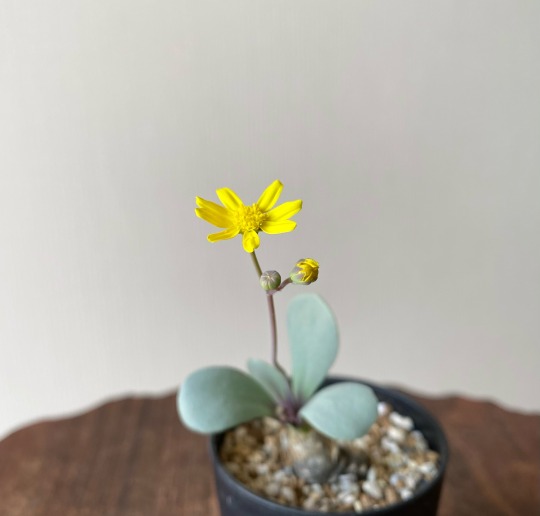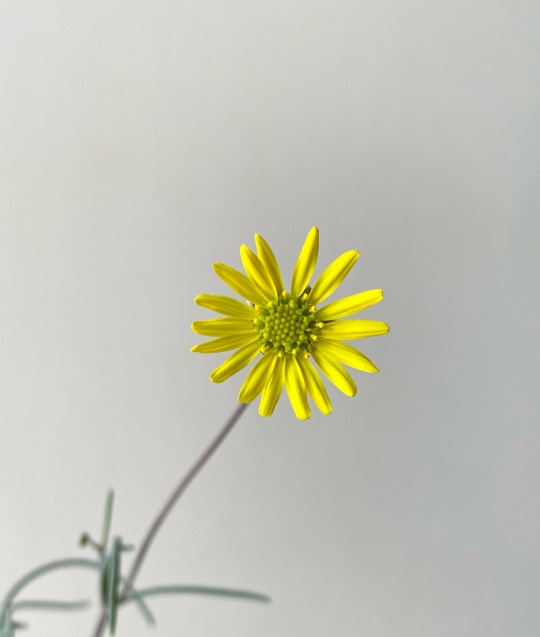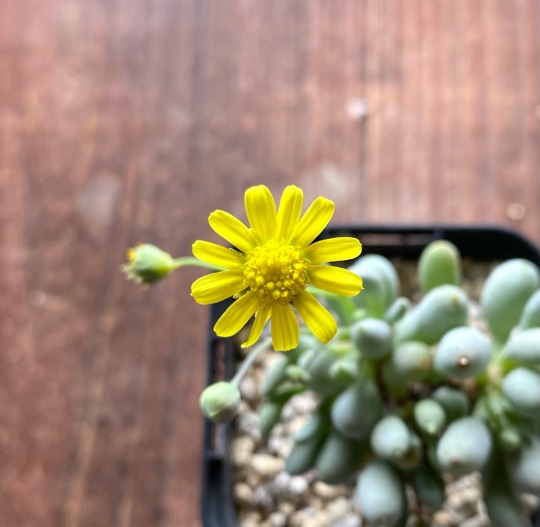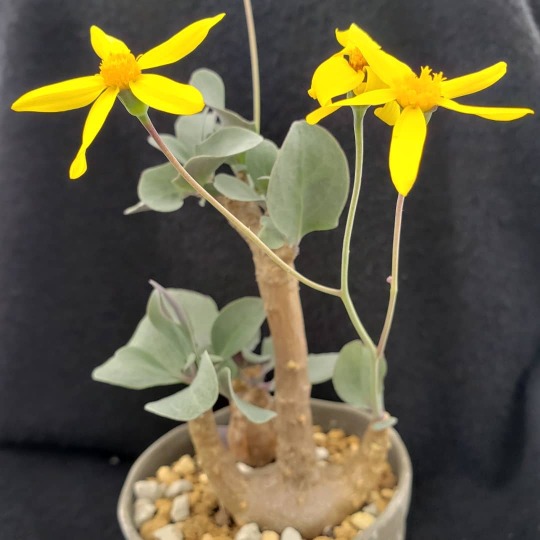#triplinervia
Photo

*221110 可愛いだけでなく年月を経て渋さも併せ持って魅力がマシマシなトリプリ🪴⤴︎ 好きなタイプの洗練せれたマットな仕上がりの鉢もその辺に転がっていた軽石でも黒板のように描けちゃう便利さ✒︎👨🏻🏫 #晋山窯 #美濃焼 #リサイクル #黒板 #マット #othonna #triplinervia #オトンナ #トリプリネルビア #caudex #cactus #succulent #塊根植物 #観葉植物 #多肉植物 #サボテン #ボタニカルライフ #botanical #トリプリネルビア_ky #神戸 #植木鉢 https://www.instagram.com/p/CkyGC9Hp6oB/?igshid=NGJjMDIxMWI=
#晋山窯#美濃焼#リサイクル#黒板#マット#othonna#triplinervia#オトンナ#トリプリネルビア#caudex#cactus#succulent#塊根植物#観葉植物#多肉植物#サボテン#ボタニカルライフ#botanical#トリプリネルビア_ky#神戸#植木鉢
0 notes
Photo

死んだと思っていたところから葉っぱが復活 is 嬉しい。 #オトンナトリプリネルビア #othonnatriplinervia #triplinervia #othonna https://www.instagram.com/p/B4YxDAJgcfK/?igshid=1gwbbw74ul3g0
1 note
·
View note
Photo










A Survey of the Best Goldenrods for your Garden (Part I)
Introduction:
Why goldenrods?
There are currently 136 species in the genus Solidago, three more than the last time I checked the astereae lab. (see https://uwaterloo.ca/astereae-lab/) Most of these species are native to North America. For those who see them on the roadsides as masses of weedy generic golden flowers, it seldom occurs to them that from July through October they are most likely witnessing the blooms of a dozen or more species. By far the most common and most widespread and aggressive goldenrods throughout the Americas are those within the Triplinerviae group, which includes S. canadensis, S. gigantea, and S. altissima all of which can be maddeningly difficult to accurately distinguish even for the experts. Weedy though they may be, there are many plant lovers including those in the cut flower trade who understand the value of the majestic diamond and pyramidal flower forms of the canadensis types. A few hybrids have been developed for the cut flower trade that are generally not available to gardeners. Cultivars sold in the nursery like S. canadensis ‘Goldenbaby are smaller diploid forms that are less aggressive and more manageable. But on the whole, only recently do we see a wider variety of garden worthy species entering the nursery trade.
This is a great benefit to gardeners as many of these varieties are well behaved and very attractive plants that don’t at all resemble their weedy cousins except in their trademark golden flowers. And it must be said, while posing the question, why goldenrods, that they do not cause allergies as they have long been accused of doing. Their pollen is heavy and sticky and not carried in the wind. It has been guilt by association, a purely circumstantial case, while the real culprits (one of them ragweed) are off the hook. Goldenrods depend on insects for pollination.
Which brings me to the overwhelming benefit to growing goldenrods: they are one of the most important food sources in the late season for pollinating insects, especially bees. And goldenrod honey is delicious. Gardeners who are aware of the decline in bee species throughout the world, should straightaway run to their nearest online nursery and begin shopping for appropriate Solidago species for their region of the country. Lastly, in addition to providing you a pictorial and descriptive list of some of my favorite forms, I do so to show another advantage to growing goldenrods. It has to do with form. If you think about most perennials, you notice that many plants come in a variety of colors, but by and large represent a single form. Goldenrods do it the other way around--they come in only two colors, overwhelmingly yellow/golden and a couple of white ones, but they come in a wide variety of flowering forms. I hope to introduce the unfamiliar to some of the more striking and unusual ones, that should provide imaginative gardeners with a lot of landscaping and design opportunities.
1 & 2. Solidago bicolor. Also called silver rod, this is one of the white goldenrods well suited to the garden. Beloved by bees and has a light lily-like or honey suckle fragrance. Widely adaptable in Eastern North America, from the Maritimes south to Alabama and Georgia and as far west as Michigan and Illinois. In the wild, it is often sparse and underdeveloped and makes little impression. In cultivation it can make a rich flowering stand in late summer and early fall producing refreshing cream-colored wands over a 4 to 6 week period. Planted in a mass with Helenium, Sedum, Persicaria or Panicum it will have people asking, ‘what’s that’, and ‘goldenrod, really?’ Can sustain winter damage, but I’ve been growing it for 7 years and still have a few of the original seed grown plants. Reseeds will replace spent plants, and its slender profile won’t take up too much room in your garden. Full sun and part shade, where it can reach 4ft in height. Usually about 2 to 3 ft in full sun.
3, 4 & 5. Solidago riddellii. In my opinion this is the finest and most versatile goldenrod you can grow in your garden. It has an elegant and striking presence from May to November that is just as suitable for refined plantings as it is for the wild or natural garden. What you have here is a distinctive and elegant foliar profile, strong stems and rich, vibrant flowering. Another plus (image 5) is that the spent flowers retract neatly and the golden color of the phyllaries shines through, so there is no drab phase many flowers and most goldenrods pass through. Rather a pleasant golden/brown appearance enhanced by bright chartreuse leaflets below keep it shining through October, along with flashes of variegated colored fall foliage in shades of gold, orange, red, pink, purple and bronze. Finally soft-gray mounding seed heads complete the show in November. This long-lived clumper is a native of moist conditions, but it performed beautifully in the drought conditions that 2020 brought. So at the very least it can withstand the occasional drought. 2 1/2 to 3 1/2 ft in height. Difficult to find in nurseries or from seed. I purchased my seed from Ernst Conservation Seeds. The prices per pound are staggering and have gone up considerably since I first purchased seed in 2013 but smaller portions can be purchased at more affordable prices. Pollinator paradise.
6 Solidago rugosa ‘Fireworks’. This variation of S. rugosa was discovered in North Carolina in 1973 and registered as a cultivar in 1993. A more beautiful structural plant is hard to find, that and the thrilling lateral blooms cascading in all directions puts this one in my top 5 goldenrods. Likely a tetraploid as it blooms a good month later than the native S. rugosa that grow in Vermont, and it displays a tetraploid’s vigor. This plant is tough as nails and completely immune to flopping or collapse. You can park a bike against it (not saying you would but sometimes kids do the darndest things). The foliage is unremarkable and coarse (thus the name rough or crinkle leaf goldenrod), but notice in image 6 that even at bloom time it maintains most of its lower foliage, so you don’t have to hide ugly legs as you do with most Asters and many fall blooming perennials. You do have to watch this one over time. This slow spreader won’t take over your garden, but a single plant will spread outward into a 3 or 4ft stand, with its underground rhizomes working their way into other plants. Very long lived and hardy. It blooms so late in the north my experience is that it never has time to set seed before it is cut down, either that or it is sterile. Long and short you won’t be troubled with seedlings.
7 & 8: Solidago caesia ‘Blue Stem Goldenrod’. Here is one that can be grown in sun or shade, and a bright graceful addition it is to the shade garden given it blooms in August and September when very little is flowering in anyone’s shade garden. It has lax stems that tend to arch, cascading on slopes and showing off the lovely linear quality of its axillary blooms. Quite bushy in full sun, sparser in shade. This is one of the more delicate goldenrods with its slender purple stems coated with a blue powder, thus the name (reminding me of wild Concord grapes of childhood that ripen at the same time as these bloom) Image 8.
9 & 10 Solidago speciosa ‘Showy Goldenrod’. Put this one in your top 5 goldenrods as well. The shorter diploid version is pictured in image 9 and the much taller bolder tetraploid (image 10) that blooms very late in the North. Image 10 was harvested from the disturbed ground along the NJ Turnpike about 3 years after construction occurred. There are foliage differences as well. The tetraploids I harvested showed no dentation on the leaves (they were entire and longer and smoother than those of the diploids I harvested from Central Massachusetts). I believe most of what you will find offered in the wildflower nurseries such as Prairie Moon and High Country Gardens are the earlier blooming, shorter diploid types. But don’t ask the nurseries, they will neither know nor care. If it says to 3ft, it’s probably diploid, if it says to 5ft, possibly tetraploid. Some of the NJ populations were as tall as 6 1/2 ft, which of course makes a lot of difference if you are planning a garden. Majestic, non-invasive clumps, with quarter inch individual flowers give these full flower heads their showy quality and what I can only describe as a radiant glow from a distance. Another plus are the often deep red stems that intensify in color in the fall and make for a spectacular contrast with the cloud-like off-white seed heads. A stand of these in your pollinator garden is definitely worth growing.
12 notes
·
View notes
Text
オトンナのお花

Othonna wrinkleana


Othonna protecta/Othonna armiana

Othonna herrei

Othonna clavifolia

Othonna triplinervia


Othonna hederifolia/Othonna sp. Boestmanplaat


Othonna perfoliata/Othonna cacalioides
4 notes
·
View notes
Photo

. 今年も花が合わないんです(•́ε•̀٥) 🇿🇦のナーセリーにタネを発注したら 「Xmas🎄だから年明けてからやるよ」 だそうです🙃 まだ年内10日もあるからね! とは言わなかったけど🙊 💦 . #Othonnatriplinervia #othonna_niche #Othonna #triplinervia #オトンナ #トリプリネルビア #トリプリネルビア_niche #塊根 #caudex #southafrica #南アフリカ #nonfilter #岩手 #岩手多肉 — view on Instagram https://ift.tt/3GUNXg8
0 notes
Text
Highdown Research Journey, part 20
Desperately Seeking Dora.

PERU SPECIMENS SIMILAR TO NEW ZEALAND SPECIES.
ENGLISH WOMAN’S SUCCESSFUL SEARCH.
MIss Dora Stafford said this week: “During the 15 months I spent in Peru on this last trip my base was Arequipa…The pampas country between Arequipa and Puno is at a general level of 12,000 feet and I was often much higher…One advantage of the great height was that food keeps fresh and good for an extraordinary long time. An egg, for instance, is still perfectly good a month after being laid.” Ellesmere Guardian, New Zealand, 1 July 1938.
Another Dora has entered my life. Just when I was wrapping up my research for Highdown Gardens. Never heard of Dora Stafford? I came across her by accident reviewing this month one of the 3500 plant index cards that came from Highdown Gardens. In this the owner Frederick Stern notes that the plant in question Bidens triplinervia came from the mountains of Peru collected by Dora. He planted it in his famous Chalk Rock Garden. I managed to cross reference her with letters sent to Stern, now in the archives of the Royal Botanic Gardens, Kew. Her favourite plants were succulents, such as cacti.
Dora always seemed to be missing Stern at important botanical meetings held in London, during the 1930s. She was looking for sponsors for her next expedition. They finally did meet up and Stern did sponsor her. I also discovered that Kew did rather well out of one of Dora’s expeditions as seen in the Kew bulletin of 1938 when they received a 1000 specimens or as they describe “… the large and very valuable Peruvian collection of Miss Dora B Stafford”. It appears she died in 1939. We in the UK have forgotten her, but Peruvian botanists have not and named a plant after her Xenophyllum staffordiae in honour of her. Above a photo of Stern’s card and my caricature of her as photo libraries charge sooo much copyright fee.
0 notes
Photo

*210918 月より団子🌙🌚 団子型の塊根が欲しい😆 #othonna #triplinervia #オトンナ #トリプリネルビア #caudex #cactus #succulent #塊根植物 #観葉植物 #多肉植物 #サボテン #ボタニカルライフ #botanical #神戸 #住宅 https://www.instagram.com/p/CT91wKTPxHe/?utm_medium=tumblr
#othonna#triplinervia#オトンナ#トリプリネルビア#caudex#cactus#succulent#塊根植物#観葉植物#多肉植物#サボテン#ボタニカルライフ#botanical#神戸#住宅
4 notes
·
View notes
Photo

*210913 次女が化粧石を直してくれました😊 と思ったら指をズボ!と挿しました😫 #2歳 #多肉女子 #多肉幼児 #多肉園児 #多肉乳児 #娘 #othonna #triplinervia #オトンナ #トリプリネルビア #caudex #cactus #succulent #塊根植物 #観葉植物 #多肉植物 #サボテン #ボタニカルライフ #botanical #トリプリネルビア_ky #神戸 #住宅 https://www.instagram.com/p/CTwiFsRlSAH/?utm_medium=tumblr
#2歳#多肉女子#多肉幼児#多肉園児#多肉乳児#娘#othonna#triplinervia#オトンナ#トリプリネルビア#caudex#cactus#succulent#塊根植物#観葉植物#多肉植物#サボテン#ボタニカルライフ#botanical#トリプリネルビア_ky#神戸#住宅
1 note
·
View note
Photo

*200301 ・ ・ サイズアップしてる⁉️🤔 ・ ・ 皆様の外国人エピソード笑わせていただきました🤣🙏🏻 ・ #外国人エピソード #othonna #triplinervia #オトンナ #トリプリネルビア #caudex #cactus #succulent #塊根植物 #観葉植物 #多肉植物 #サボテン #ボタニカルライフ #botanical #トリプリネルビア_ky #神戸 https://www.instagram.com/p/B9MfF3UlvRm/?igshid=95wl9ov5mlss
#外国人エピソード#othonna#triplinervia#オトンナ#トリプリネルビア#caudex#cactus#succulent#塊根植物#観葉植物#多肉植物#サボテン#ボタニカルライフ#botanical#トリプリネルビア_ky#神戸
2 notes
·
View notes
Photo

*191105 ・ ・ かわいい路線で☺️ ・ ・ 水やり回数減ってまだ増やせると思ったのは勘違いです☹️ ・ #othonna #triplinervia #オトンナ #トリプリネルビア #caudex #cactus #succulent #塊根植物 #観葉植物 #多肉植物 #サボテン #ボタニカルライフ #botanical #トリプリネルビア_ky #神戸 https://www.instagram.com/p/B4eHg_Yl8b6/?igshid=xfn9j7qxwmvm
#othonna#triplinervia#オトンナ#トリプリネルビア#caudex#cactus#succulent#塊根植物#観葉植物#多肉植物#サボテン#ボタニカルライフ#botanical#トリプリネルビア_ky#神戸
1 note
·
View note
Photo

*190104 快晴☀︎ ・ おもちが好きなせいか おもちフォルムに惹かれます✨ ・ ・ 調子崩してましたがなんとか動いてくれてます☺️ ・ ・ ご挨拶した方もしてない方も #あけましておめでとうございます #おもち #鏡餅 #ガントリークレーン#othonna #triplinervia #オトンナ #トリプリネルビア #caudex #cactus #succulent #塊根植物 #観葉植物 #多肉植物 #サボテン #ボタニカルライフ #botanical #トリプリネルビア_ky #toky_item https://www.instagram.com/p/BsNO-xBHd11/?utm_source=ig_tumblr_share&igshid=1wrrda52infh3
#あけましておめでとうございます#おもち#鏡餅#ガントリークレーン#othonna#triplinervia#オトンナ#トリプリネルビア#caudex#cactus#succulent#塊根植物#観葉植物#多肉植物#サボテン#ボタニカルライフ#botanical#トリプリネルビア_ky#toky_item
8 notes
·
View notes
Photo

*190405 ・ ・ 今年は咲きそうにないな。。。 ・ ・ 財布を買い換えたくて…1年が経った… いいのがないかなーっと思いつつ探していたけどコレっていうのがない🤔そもそもそんなに探す余裕のないまま1年がたった😑 ・ 何かオススメがあれば教えてください🙇🏻♂️ ・ シルプルなレザーの二つ折りが好みです☺️ ・ #財布 が欲しい #レザー #othonna #triplinervia #オトンナ #トリプリネルビア #caudex #cactus #succulent #塊根植物 #観葉植物 #多肉植物 #サボテン #ボタニカルライフ #botanical https://www.instagram.com/p/Bv3aC4jFW3Y/?utm_source=ig_tumblr_share&igshid=pjffe7zmqnqx
#財布#レザー#othonna#triplinervia#オトンナ#トリプリネルビア#caudex#cactus#succulent#塊根植物#観葉植物#多肉植物#サボテン#ボタニカルライフ#botanical
1 note
·
View note
Photo

*220916 トリプリネルビアはほんますぐ焼いてしまうので注意※ 自分に🫡 2025年までかかるプロジェクトを始めようとしてるけどその時まで自分が元気かどうかも心配になってきた🫥 #植物を頼む #othonna #triplinervia #オトンナ #トリプリネルビア #caudex #cactus #succulent #塊根植物 #観葉植物 #多肉植物 #サボテン #ボタニカルライフ #botanical #神戸 #住宅 #トリプリネルビア_ky2 (山本建築設計事務所) https://www.instagram.com/p/CikcQdUPbrs/?igshid=NGJjMDIxMWI=
#植物を頼む#othonna#triplinervia#オトンナ#トリプリネルビア#caudex#cactus#succulent#塊根植物#観葉植物#多肉植物#サボテン#ボタニカルライフ#botanical#神戸#住宅#トリプリネルビア_ky2
1 note
·
View note
Photo

*181012 冬型は水やり忘れがち ・ 明日あげるので待っててね👍🌵🚿 ・ ・ おつかれさまでした🙋🏻♂️💨🌱 ・ #冬型あるあるはやくいいたい #othonna #triplinervia #オトンナ #トリプリネルビア #caudex #cactus #succulent #塊根植物 #観葉植物 #多肉植物 #サボテン #ボタニカルライフ #botanical #トリプリネルビア_ky https://www.instagram.com/p/Bo1Ne72gVvO/?utm_source=ig_tumblr_share&igshid=1q2dwvgh9hpez
#冬型あるあるはやくいいたい#othonna#triplinervia#オトンナ#トリプリネルビア#caudex#cactus#succulent#塊根植物#観葉植物#多肉植物#サボテン#ボタニカルライフ#botanical#トリプリネルビア_ky
1 note
·
View note
Photo

前に使いこなせなくて手放したマクロレンズまた欲しくなってきた。 #オトンナトリプリネルビア #othonnatriplinervia #triplinervia #othonna #鮭園芸 https://www.instagram.com/p/CWUJR1RPxuO/?utm_medium=tumblr
0 notes
Photo

パワー感じる #やってやんぞ感 #かかってこいや感 #オトンナトリプリネルビア #othonnatriplinervia #triplinervia #othonna https://www.instagram.com/p/B9hE18gBsY6/?igshid=31xhnmz38hfz
0 notes